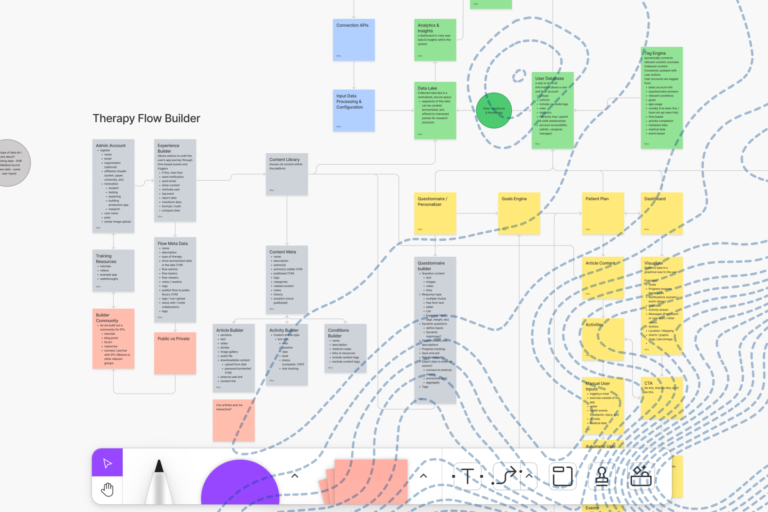The demands of work during quarantine and a global pandemic have turned the workplace upside down. Stay-at-home mandates turned into work-from-home workforces. And while some businesses shut down for a few days or weeks, others realized that employees working from home was a way to keep the business running. That required rebuilding IT infrastructures and communication workflows to accommodate their newly displaced workforce. But this also led to many companies scrambling to figure out how to facilitate and manage a team without a common meeting space.
Luckily, here at Arcweb we were already prepared for this pivot. Thanks to our existing hybrid home-and-office policy, our team was already abiding by a “three days in the office and two days remote” structure. Now we’re operating in an even more flexible hybrid environment that we refer to as “Office Optional.”
Employee and Employer Benefits of WFH
Our current, more flexible work environment was established as a joint employer-and-employee effort to allow people in more flexible roles to work in a way that supported a healthy work-life balance and created more satisfaction and happiness.
Our initial reason for implementing a hybrid policy was to empower employees who wanted flexibility and fulfillment. Arcwebers appreciated the time they saved by avoiding lengthy commutes, reducing extended morning routines, and taking the rush out of the frantic task of getting their kids to school and making it into the office on time.
In the past, some companies have argued that WFH policies decrease productivity and cause a breakdown in communication. But we’re confident that our policy fosters happier employees and a more productive environment—one where our team values time, productivity, effort, and the company as a whole.
Employee benefits of a WFH environment includes:
- Flexibility
- Trust
- Balance of “heads down / concentration” and in-office collaboration time
- Work / life balance
Employer benefits include:
- Productive employees
- Happy employees
- Talent sourcing
The Hybrid Model
Our flexible environment has always been a differentiator, something that was part of our culture from the beginning. We knew that more mobility would allow us to attract the right talent, and our structure allowed us to continue working effectively with clients. Switching to full remote during the pandemic was easier due to this past experience, so our clients and teams were able to adapt to the initial “remote-only” world much more quickly than some other companies.
After listening to our employees, we revised our pre-pandemic policy. Our newly defined “Office Optional” hybrid policy is a shift from our hybrid model, but one which endeavors to keep the benefits of our old module while enabling a safe working environment that allows for social distancing.
So far, our approach has worked well for our company and our employees. Here are some of the benefits we’ve found:
1. Maintained Collaboration and Culture
In-person collaboration has always been a core part of the Arcweb model. A hybrid model allows us to continue in-person meetings without requiring the whole team to be in the office. This is essential for those who choose to work from home but should be included in certain meetings or events.
2. Harnessed In-Person Energy
Our employees are incredibly productive from wherever they work, but there’s a collaborative energy that is difficult to recapture through a video conferences. We still wanted to offer a space for employees to come together as needed—and as wanted—to harness the energy from others and enjoy the fruits of in-person interaction and collaboration.
3. Reduced Distractions
Different people have different capabilities and experiences dealing with distraction. For some, a workplace—with a kitchen, lounge, and conversations between co-workers—may be more distracting. Others may find being at home far more distracting than the office. Our office-optional model allows Arcwebers to work in whichever environment they find best suits them.
Establishing a Successful Hybrid Environment
We’ve learned a lot from our experience establishing a hybrid working environment. Here are a few fundamentals and tips that we’ve found to ensure that both workers and the company are mutually successful.
1. Establish a policy (with wiggle room)
The WFH policy should be straightforward and clearly communicated to the team. For example, if the office is truly “optional” then employees shouldn’t have to worry whether they’ll be penalized for not coming into the office. Unspoken or unclear expectations are often lost in translation and can cause stress and miscommunication within the team.
But even if your policy is clear and unambiguous, keep in mind that people are people and flexibility will always be necessary. Arcweb has always afforded members of the team a high degree of autonomy, and that has carried over to the way we handle our in-office policy.
2. Prepare your space
Plan for a hybrid environment. Remember that some people will be in the office and some remote, so try to ensure no one is left out. A best practice is to ensure that those working remotely are included and engaged in every meetings, lunches, team building events, and any other essential work activities at the same levels as those attending in-person.
At Arcweb, we’ve ensured that if a conference room is going to be used for hybrid meetings, it will have a dedicated screen and AV hookup for remote attendees. In addition, we either schedule company or team-side events in a remote-compatible environment or we’re explicit about which events do require in-person interaction.
3. Rethink how you collaborate
Some of the biggest challenges of remote / hybrid collaboration are things like managing time, collaborating effectively, and communicating availability to the rest of the team. Because collaboration is so central to our work, we’ve adopted a range of solutions to create a more effective means of communication.
We use the design tool Figma in our design process, and the Arcweb team now makes ample use of its online collaboration tools for traditionally in-person design activities. We’ve also taken to making extensive use of Slack’s scheduled messages feature to ensure that notifications arrive at a convenient time, rather than potentially interrupting someone. Many people on the team have also taken to marking “Focused Work Time / Do Not Disturb” time on calendars.
4. Lead by example
It’s important to ensure that the rules that apply to leadership also apply to the rest of the company, and the same is true of any in-office policy in place. And because employees often look to leadership for examples of what is and isn’t permitted, it’s critical to not give conflicting messages about office and home policy.
Arcweb has always been an organization with minimal hierarchy, and we’re big believers in everyone in the org being on the same page, up to and including the CEO. We’re careful to treat all Arcwebers the same, whether they choose to work primarily in the office or primarily from home.
5. Don’t forget about community
Remote culture activities can keep the community team environment thriving. Consider games or fun activities that can be facilitated through technology both during and outside of company time (there is a time and a place for both).
At Arcweb, we have various culture-oriented channels on our Slack that give team members an opportunity to socialize whether or not they’re in the office, as well as an ongoing Music League competition and weekly trivia challenges. We’ve also scheduled group viewing activities and ask for activity suggestions from our team members.
Excelling in a Remote Workforce World
While our hybrid work environment is still a compromise, it has let us create a workplace that ensures we can continue delivering high-quality results for clients and cultivating a high-functioning team—while still acknowledging the need to be safe in a post-COVID world.
Making the change was fully aligned with our culture. We are adaptable as an organization and already ready to meet any challenge. This mindset is one that transcends our internal culture to how we work to deliver solutions for our clients. With trust and full transparency, we are able to avoid micromanaging individuals while offering autonomy and creating the conditions for our team to thrive.
We’ve always been proud of our culture, and committed to ensuring that Arcweb is a great place to work and thrive, both as individuals and as a company. It’s a part of who we are as an organization—in the past, now, and in the future, too.
Visit our About page to learn more about the Arcweb culture and our collaborative approach to working with clients.





